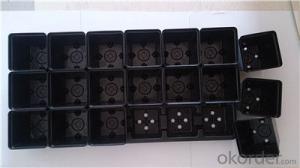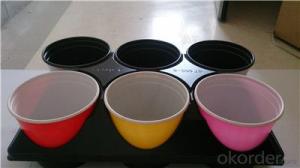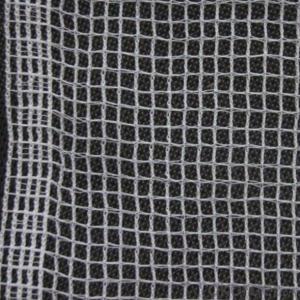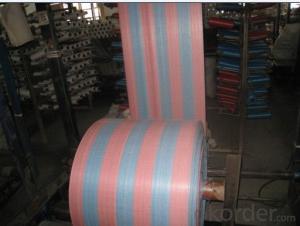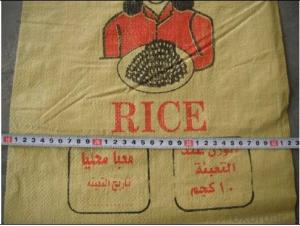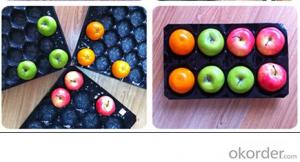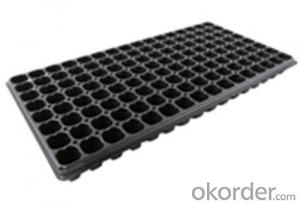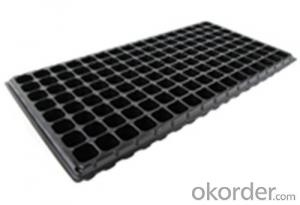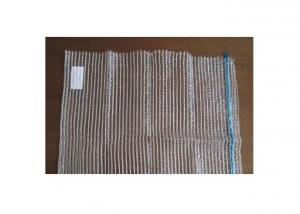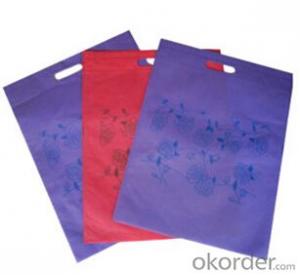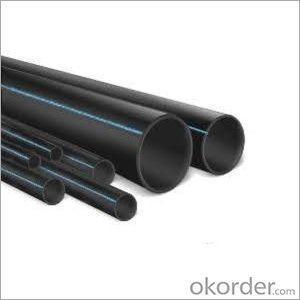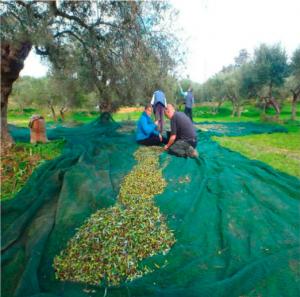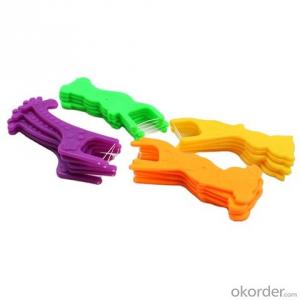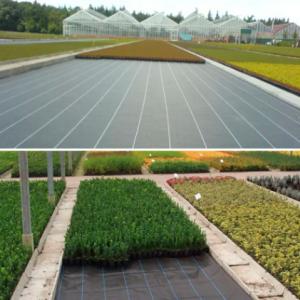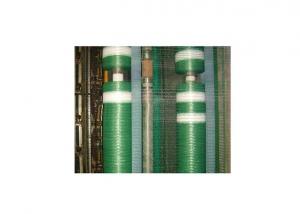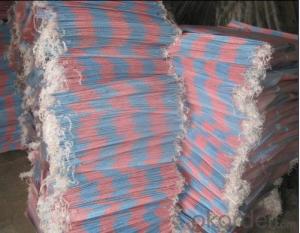Seed Tray Nursery Tray Plastic Tray with Cells Used for Greenhouse
- Loading Port:
- China main port
- Payment Terms:
- TT OR LC
- Min Order Qty:
- 3000 pc
- Supply Capability:
- 10000000 pc/month
OKorder Service Pledge
OKorder Financial Service
You Might Also Like
Product Description:
Advantages:
Top quality and competitive price.
Variety design and good appearance.
Easy to use, and remove.
Durable and reusable.
Eco-Friendly.
Application:
Ideal for Starting seeds and Transplanting Seedling.
Suitable for both manual and automatic planting.
Suitable for Propagating Vegetables, Flowers and other plant from seed in green-house or indoors.
Specification:
Material: HIPS/PVC
Thickness: 0.5mm-1.5mm, Standard:1mm
Weight: 80g(±5)g-230g(±5)g, Standard weight:155g(±5)g
Size: length:490mm-540mm, width:190mm-345mm,depth:25mm-150mm
Standard:54mmX28mm
Cell count: 18-512
Package: carton
Using time: 8-10 times
Thickness vs. Weight
Thickness of trays are from 0.5mm to 1.0mm.
1.0mm: 155g±5g; 100pcs/ctn.
0.9mm: 140g±5g; 120pcs/ctn.
0.7mm: 110g±5g; 150pcs/ctn.
0.6mm: 95g±5g; 180pcs/ctn.
0.5mm: 80g±5g; 200pcs/ctn.
Using time:
thickness of 0.5mm can be used 1 to 2 times.
thickness of 0.6mm can be used 3 to 4 times.
thickness of 0.7mm can be used 5 to 6 times.
thickness of 0.8mm can be used 7 to 8 times.
thickness of 0.9mm can be used 8 to 9 times.
thickness of 1.0mm can be used 8 to 10 times.
Weight and thickness as follows
| Thickness | Weight |
| 0.5mm | 80g±5g |
| 0.6mm | 95g±5g |
| 0.7mm | 105g±5g |
| 0.8mm | 125g±5g |
| 0.9mm | 140g±5g |
| 1.0mm | 155g±5g |
| 1.1mm | 170g±5g |
| 1.2mm | 185g±5g |
| 1.3mm | 200g±5g |
| 1.4mm | 215g±5g |
| 1.5mm | 230g±5g |

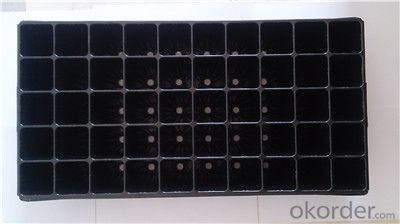
- Q:Rather then asking people and shopkeers not to make use of the Plastic bags (or to charge more to discourage it from using it), wouldnt it be more effective if the government bans the manufacturing of such plastic things? at the manufacturing level?For they have to have trust in people as they will intially struggle but will change for good over a period of time..
- Currently in South Australia our plastic bags have change consistency. The bags now disintegrate at a much faster rate. Or we now can use material bags (green bags) which are washable and can be reused many times before needing to recycle them and buy new. I have been using reusable bags (20 years or so) even before they were brought in for the general public to use. The shops charge 10c for every plastic bag you buy to take your groceries home. Has that had an impact on their use - I don't know. It took quite a while for people to change their ways. There are now more people using the green bags' than plastic. But still the plastic is around. I don't know what was wrong with the original paper bags that we had when I was a child. They were reusable and bio-degradable. What will happen in the future? Only time will tell.
- Q:What are the different types of plastic irrigation fittings?
- There are several different types of plastic irrigation fittings, including couplings, tees, elbows, adaptors, valves, and connectors. These fittings are used to connect and redirect water flow within an irrigation system, ensuring efficient and effective distribution of water to plants and crops.
- Q:Can nursery trays be used for propagation?
- Yes, nursery trays can be used for propagation. Nursery trays are designed to provide an ideal environment for seedlings and cuttings to grow and develop roots. They often have compartments or cells that allow for easy separation and transplanting of individual plants. Additionally, nursery trays provide adequate drainage and water retention, promoting healthy root growth and reducing the risk of overwatering.
- Q:How do you prevent ground cover from becoming invasive?
- The best way to prevent ground cover from becoming invasive is to choose non-invasive species and plant them in appropriate areas. Regularly monitoring and managing the growth of ground cover by pruning or cutting back can also help maintain control and prevent it from spreading aggressively. Additionally, avoiding the introduction of ground cover from outside sources and properly disposing of any invasive plants can further prevent their spread.
- Q:My town allows us to recycle plastics with numbers 1-7 on the bottom the container. But what exactly is the difference between plastics with different recycle numbers on them? Are they just different kinds of plastics or what?
- Some plastics cannot be mixed together. The numbering system is used to identify them. See the link below... You might be surprised to know that much of the plastic collected for recycling ends up in landfills anyway.
- Q:Anyone know of anything that will stain plastic instantaneously at contact? It's for a science fair project. I am trying to measure movement.
- Soaking it in hot water with a bit of bleach in it may do it. There is some stuff in the dishwashing detergent aisle at Wal Mart ... it's called plastic booster or something like that. I think you can put it in your dishwasher and it helps get that kind of stuff off. I've personally never spent the money to try it, so I don't know how well it works. I just usually wash the container and surrender myself to the fact that it's just going to be stained!
- Q:Can agricultural plastic be used for vertical farming systems?
- Yes, agricultural plastic can be used for vertical farming systems. Vertical farming systems often require the use of specialized materials to create growing surfaces and containers for plants. Agricultural plastics, such as polyethylene or polypropylene, can be utilized to construct vertical farming structures, including grow bags, trays, or even vertical towers. These plastics provide durability, flexibility, and resistance to environmental factors, making them suitable for supporting plants in vertical farming systems. Additionally, agricultural plastics can be designed to be lightweight, recyclable, and UV-stabilized, further enhancing their suitability for vertical farming applications.
- Q:Are plastic bottle caps recyclable? Or should we just throw them away.
- im sure they are. i recycle them when i throw away my plastic bottles all the time
- Q:This is the most depressing article I've read in awhile. What is preventing us from recycling a larger volume of plastic? Is it not cost effective? Is that whats holding us back?
- It's often a business reason and what can and cannot make money- which makes sense to a reason. I worked for a local gov't one summer in their recycling plant and saw first hand how things actually work. Only some plastics are recycled (take a look at the bottom of say a shampoo bottle or laundry detergent bottle, and then say the bottom of a sour cream container). The shampoo bottle will likely have a 2 on it- thus, it makes the recycling plant more money and there is more of a market out there for them to sell it too. There are costs to keep that plant running, to pay the employees to sort through the recyclables and so forth. Granted, it was an elaborate set up and there were several different rooms- paper and newspaper sorted in one, plastics another, aluminum got pulled off by a magnet, garbage was pulled off immediately though another...but it has to be paid for. If this wasn't run at a balance or near too it- people would be crying out for fiscal irresponsibility. The environment these days is the biggest business out there. Also, to the person who said it can only be made back into plastic so many times- thats true to an extent as well. However, a lot of the buyers of plastics are from overseas (at least here in Canada)....if you ever wear a fleece jacket- that's made from recycled plastic materials....or even plastic pellets, again recycled plastic. Recycling is a business. Plain and simple. It may make us feel good to do so- and it really is a GOOD thing to do at the end of the day...but it boils down to money.
- Q:How does ground cover impact the growth of other plants?
- Ground cover can have a significant impact on the growth of other plants by competing for resources such as sunlight, water, and nutrients. Depending on the type of ground cover, it can either suppress the growth of other plants by shading them out or by releasing chemicals that inhibit their growth, or it can enhance the growth of other plants by providing protection from harsh environmental conditions and acting as a natural mulch to retain moisture and nutrients in the soil.
1. Manufacturer Overview |
|
|---|---|
| Location | |
| Year Established | |
| Annual Output Value | |
| Main Markets | |
| Company Certifications | |
2. Manufacturer Certificates |
|
|---|---|
| a) Certification Name | |
| Range | |
| Reference | |
| Validity Period | |
3. Manufacturer Capability |
|
|---|---|
| a)Trade Capacity | |
| Nearest Port | |
| Export Percentage | |
| No.of Employees in Trade Department | |
| Language Spoken: | |
| b)Factory Information | |
| Factory Size: | |
| No. of Production Lines | |
| Contract Manufacturing | |
| Product Price Range | |
Send your message to us
Seed Tray Nursery Tray Plastic Tray with Cells Used for Greenhouse
- Loading Port:
- China main port
- Payment Terms:
- TT OR LC
- Min Order Qty:
- 3000 pc
- Supply Capability:
- 10000000 pc/month
OKorder Service Pledge
OKorder Financial Service
Similar products
New products
Hot products
Hot Searches
Related keywords
